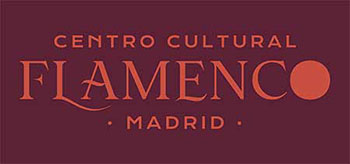|
| Daily coverage BIENAL DE FLAMENCO sponsored by: |
Dance: Charo Espino, Ángel Muñoz. Cante: Laura
Vital, Curro Cuetos. Keyboard: Moisés Sánchez. Sax-flute:
Santi Ibarretxe. Guitarra: Rafael Morales.
Camerata Romeu. Violin: Ramses Puente, Beatriz Vera, Gretchen López,
Yadira Cobo, Indira González. Viola: Anolan González,
Yohima Griffith. Cello: Yescenia Fales. Double bass: Caridad Zaldivia.
Cuban percussion: Lianne Lastra. Director: Zenaida Romeu.
In the new millennium the mixing of flamenco with ethnic
or world music is the order of the day. In recent years there has
also been a renewed interest in Cuban music. If we add to this the
fact that flamenco has long incorporated music from across the sea
that originated in Spain, was exported and then reimported, what
is known as “ida y vuelta”, the latest work of Victor
Monje “Serranito” with Camerata Romeu seems not only
logical, but inevitable.
“Sueños de ida y vuelta” is the title the Madrid
guitarist has given to this project which began with the release
of a recording of the same name last year. When Paco de Lucía
has abandoned the sextet formula, and Gerardo Núñez
just offered a recital of solo guitar with no additional instruments
of any kind, this other maestro is exploring the musical possibilities
of fusion with Camerata Romeu, a Cuban chamber orchestra with a
classic and folkloric repertoire. The results are uneven, mostly
because of the diversity of the program.
A zapateado which could have been a guitar solo includes dance,
“Recuerdos de la Alhambra” with guitar and orchestra
morphs into a rumba with bongos and cajón where Serranito’s
guitar is just another element. A guajira in minor and major allows
us to appreciate the sweet tones Serranito pulls from his instrument.
Technically he is not up to current levels but experience can’t
be learned and the guitarist still has a lot to offer.
One instrumental piece interpreted by the Cubans with tropical
personality and rhythms is pretty and well-executed, but this isn’t
what we came for and it goes on too long. With soleá Serranito
shows his stuff in a traditional vein, with a somewhat deficient
picado compared to today’s lean and hungry youngsters, but
quite a respectable alzapua. A frankly unprepared female dancer
does a long tablao-style dance without Serranito’s participation,
and once again the mind protests because this is not why we are
here and the lady lacks sufficient level to warrant our attention.
Experience can’t be learned and
this guitarist still has a lot to offer
The orchestra plays a lovely arrangement of alegrías with
Serranito in E where he gets some sweet round tones from the guitar
although he overreaches technically with some variations.
After intermission dancer Ángel Muñoz, far more competent
than the female dancer, interprets a soleá, and singers Laura
Vital and Curro Cuetos show themselves to be competent but unexciting.
This is followed by a standard guajira played by Serranito with
the orchestra’s backup, short and sweet. Bulerías with
orchestra and the Cubans get rolling with the compás, and
a taranto turns into…that’s right, rumba. Another bulerías
winds down into a sweet waltz rhythm which becomes a tad tiresome
as the various musicians takes turns, jazz-style, doing solo bits.
Overall the orchestra plays with enthusiasm and great command,
and Serranito exhibits more feeling than forty years ago when he
could boast of technique that was the envy of many young guitarists
in the era that preceded Paco de Lucía who later arrived
on the scene and raised standards considerably. Serranito can no
longer depend on that technique, and experience is his best resource.
The discreet recital ended with a curtain call and a tanguillo-rumba.
Text: Estela
Zatania
|
|
Related products:
|
|
|
|






















